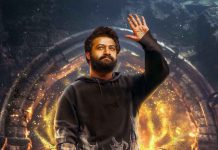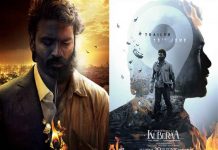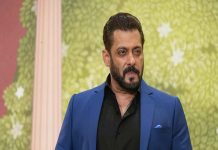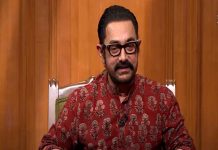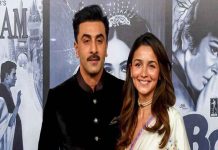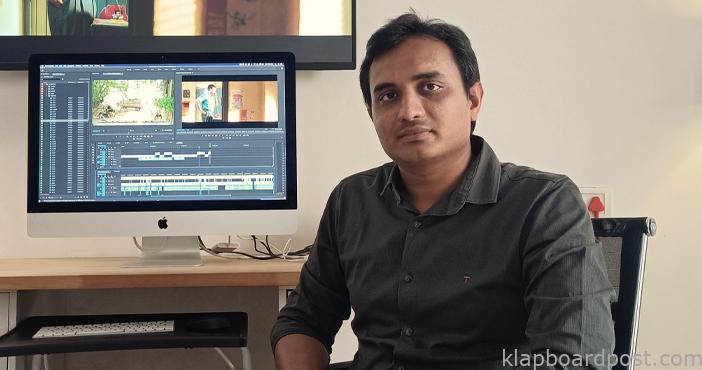 Y.Sunita Chowdhary
Y.Sunita ChowdharyRaviteja Girijala has been in the Telugu film industry as an editor for about four or five years and is quite a popular name. He rose to fame with Pelli Chupulu. An engineering grad from BITS in Hyderabad, Ravi Teja has been fascinated by cinema since childhood and wanted to move to Hyderabad some day to make a career out of it. While in engineering, he made short films and his interest in the area became intense which pushed him to take up a formal course in a film school; so he took up a one year course in LV Prasad’s at Chennai. His parents didn’t worry much because it was just a year of study. He recalls, “I had no contacts in the film field at that point of time but improvised my knowledge by reading a lot. Since I would write and edit my own short films, I began handling editing and other crafts associated with it on my own. Storytelling was the main idea and I explored various ways to tell it interestingly. I must say editing taught me many things, as to how to strengthen writing or identify where I was going wrong be it in shot making, dialogues or performance or editing etc. I developed interest in editing and realised I could do many things sitting alone in a room. Shooting involves a lot of people and a lot of chaos involved on the sets.”He further says, “I would watch films daily while in college. I was the first one to get a laptop in my friends circle and we would watch many films. I could identify the potential in a film and would quickly pin point if something could be improvised to take it to another level. However we need to see a film at least thrice to think about editing. To go till edit we need to internalise the film at least for two or three viewings. Sometimes dialogues and cinematography stands out. I am talking about good films here. Usually people think editing is about cropping. Editing and screenplay is closely related. If the screenplay is good, editing becomes smooth. Films have to look good and it is important as to how the story is told effectively by a camera. There are many layers and one of them is telling a film without a lag. Lag is usually found in a screenplay and it is a bit tricky. I have worked in films that are strong on stories and with directors who have something new to tell.”
About the rapport he shares with the directors, Ravi Teja says he does have arguments with directors but that is initially. Later he began to understand the process of communication. He shares, “Some directors are open to discussion because they consider it a team work. It is important that we be on the same page. Some directors take a great deal of footage. They have a work process like Shekar Kammula. Some directors work with stars like Ram Charan and they understand the unavailability of dates concerning them so they shoot more. Overall when you see a film in the end, you can see extra chunks. In Brochevarevarura, director Vivek Athreya wrote and shot a lot. The first half of the story was two hours. We reduced the story line of Satya Dev, removed comedy scenes. Even even writing is similar. They write more and cut after the first draft. We aim at technical perfection. These days directors are technically sound and know shot division well and how to shoot without jump cuts. If a scene is shot well, we can enhance it well through editing. If it doesn’t come well, how do I hide this mistake is what I think about.”
C/O Kancharapalem was apparently made with a minimum budget and less resources. They had non actors and dialogues had to be pieced together. This is problem solving. It is like a puzzle and they had to put it together. If there are good actors and cinematography is spectacular, we don’t need to cut it at all. Pelli Chupulu was a smooth flow and Rvai Teja understood Tarun Bhasckar’s technique. If performances are good, we can just leave it and there is no need for cutting. We make sure if the scene can hold the audience’s attention. There is no need for cuts here. Some people have a different approach, they go for many cuts and see the overall story. Sequencing is removed and they make note of the overall story.
Ravi Teja didn’t go to film school as a novice, he did a lot of study on editing. He shares, “After I went to the school, I got to know there is hardly any theory. It is mostly practise. They give us footage and ten of us edit the same short film or the same scene. I would edit and also watch how others would do it. Sir would correct and advise the people according to the style, the students would edit their work. We have to get the best output because the directors work a lot on their film and reach this stage. We reach an ideal way to edit finally after a lot of debate. We all get involved in the arguments in the best interest of the film. Sometimes the style of edits with directors are similar and sometimes we differ. After seeing the footage, I arrive at a conclusion and if the director comes to me and suggests changes, we incorporate. If we do the other way round, i.e do as per the director’s instructions we will not be able to use our mind. We become an operative person. I must have done 12 to 15 films by now. Nowadays there are new directors coming and they are coming with fresh thoughts. It is exciting and there is scope to put in effort. Sometimes routine stories and genres are not interesting. The new director’s work is challenging but by the time they begin the second and third film, I understand their style well. If we have fights, work ends. They too should have interest and come here to work the next day right? They will get annoyed with incessant debates.”
Ravi Teja states that the film’s future changes at the edit table. Apparently 45 plus minutes from 3 hours 15 minutes was removed from Brochevarevura. Kancharapalem duration is 3 hr 15 minutes and after the removed footage, the duration of the film came upto 2 hour 2hr 25 minutes. Some films are heavily dependent on editing because they are complex stories. Ask how editors get work, he responds, “We get editing jobs through networking and success. Some films when a hit is known as a director’s film and we take time to get movies. Over a period of time, the first film director approaches us again. I too don’t have judgement over some films and go by director’s take. I can only edit a film but can’t predict a film’s success. I liked brochevarevarura. The calls that I and Vivek took worked well. We would do small preview shows and make many changes in the edit room. We both took collective decisions. Middle class melodies, Umamaheshwara Ugrarupasya, Falaknuma Das, Brochevarevura, Ee Nagaraniki Yemaindi, Pelli Chupulu are the films that I worked on. I wouldn’t have become an editor had I not made short films. People should similarly work on films to know where their talent,interest lies. My next is ‘Antey Sundaraniki’.”



